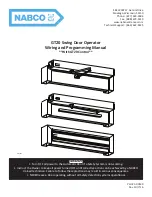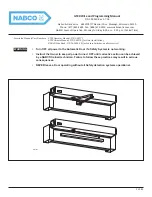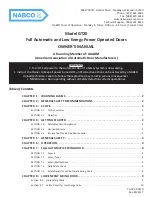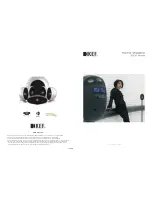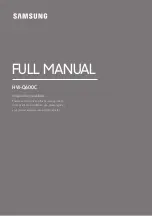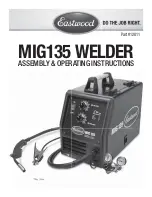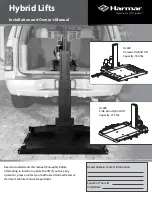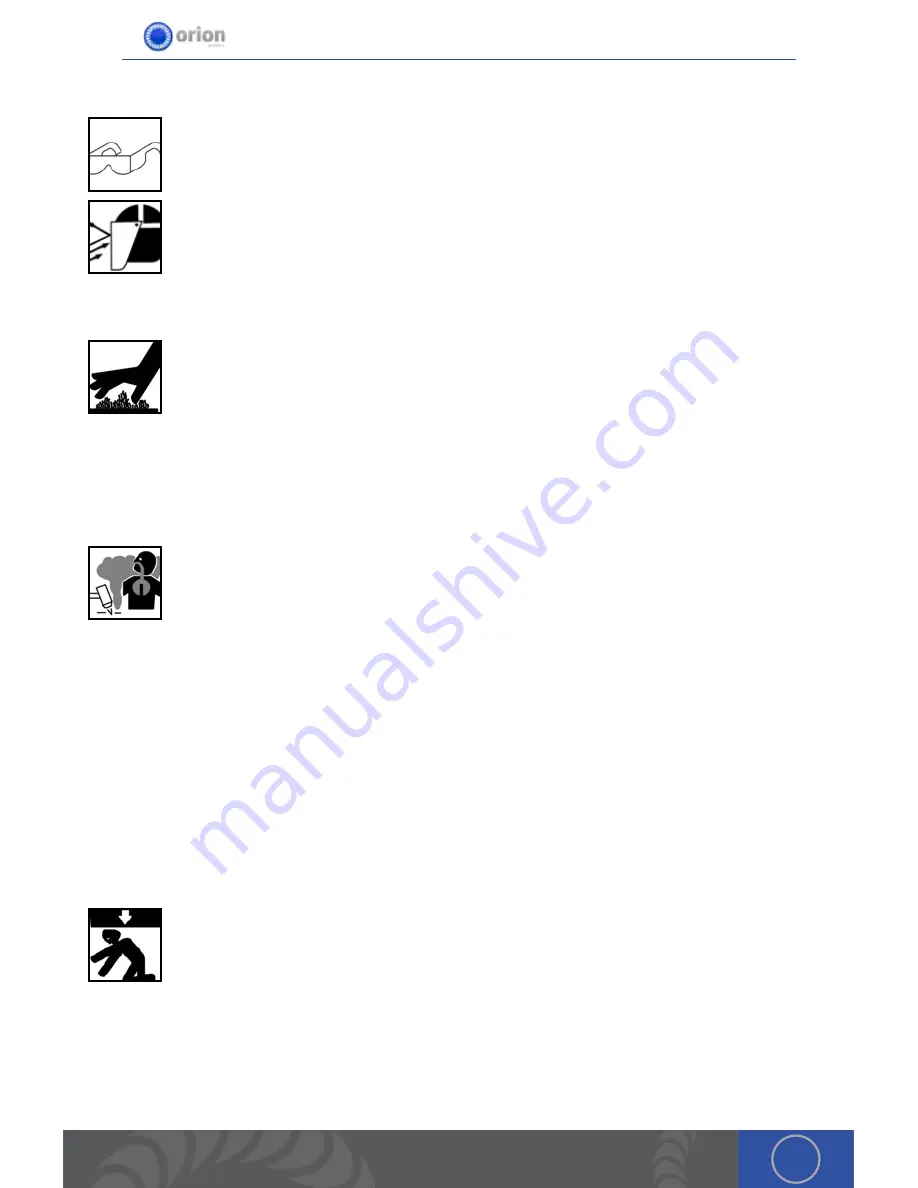
5
OrionWelders.com
similar to a sun burn . Very often sparks fly off from the weld joint area; therefore, take
the necessary precautions to avoid trapping a spark within your own clothing .
• The stereo microscope provides proper eye protection when pulse-arc welding . No
additional protection is necessary .
• Wear protective garments such as oil-free, flame-resistant leather gloves, heavy
shirt, cuff-less trousers, high shoes, and a cap . Avoid synthetic fibers as they melt
easily .
• Use an approved face shield or safety goggles with side shields when tack welding or
when observing others performing pulse-arc and tack welds .
SAFETY PRECAUTIONS FOR HOT METAL
• Welding material that has a high thermal conductivity will cause metal to heat rapidly .
• Repetitive welds in the same location can cause metal to become hot .
• Do not touch hot weld areas bare-handed .
• Allow sufficient cooling time before handling welded pieces .
SAFETY PRECAUTIONS FOR FUMES AND GASES
Welding produces fumes and gases . Breathing these fumes and gases can be hazardous to your
health . The Orion produces minimal fumes and gases when compared to large-scale arc welders .
Though not required, some form of ventilation is recommended .
• Keep your head out of the fumes . Do not breathe the fumes .
• Ventilate the area and/or use local forced ventilation at the arc to remove welding
fumes and gases .
• If ventilation is poor, wear an approved air-supplied respirator .
• Read and understand the Material Safety Data Sheets (MSDS) and the manufacturer’s
instructions for metals, consumables, coatings, cleaners, and degreasers .
• Welding in confined spaces requires good ventilation or an air-supplied respirator .
Always have a trained watch person nearby . Welding fumes and gases can displace air
and lower the oxygen level causing injury or death . Be sure the breathing air is safe .
• Do not weld in locations near degreasing, cleaning, or spraying operations . The heat
and rays of the arc can react with vapors to form highly toxic and irritating gases .
• Do not weld on coated metals, such as galvanized, lead, or cadmium plated steel,
unless the coating is removed from the weld area, the area is well ventilated, and
while wearing an air-supplied respirator . The coatings and any metals containing
these elements can give off toxic fumes if welded .
SAFETY PRECAUTIONS FOR FALLING EQUIPMENT
• Use a working surface of adequate physical strength to support the welding unit
during operation or storage .
• Secure welding unit during transport so that it cannot tip or fall .
SAFETY PRECAUTIONS FOR HIGH FREQUENCY PITCH AND VOLUME
• Welding with high frequency pulse agitation can produce loud, high pitched sounds . It
is recommended to use hearing protection when welding with agitation turned on .























